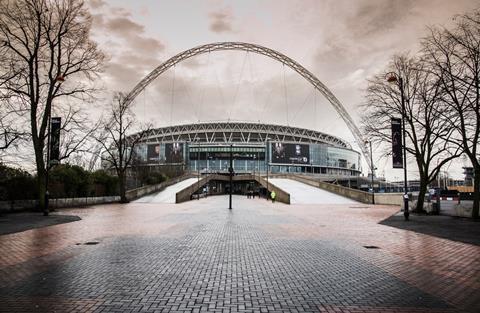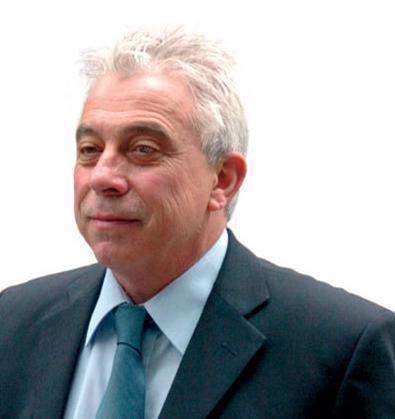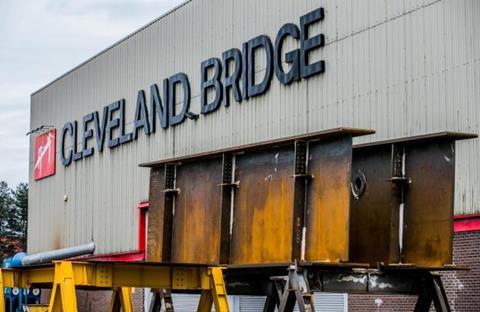The firm might not be the biggest to go under, but its work on the stadium ensured that its name stayed in the headlines
For many, Cleveland Bridge – which looks set to fold after more than 140 years in business – is best known for one job. The firm, founded in 1877 and which built the Sydney Harbour Bridge, will forever be synonymous with the rebuilding of Wembley stadium.
It later worked on the Shard – another iconic structure – but it is Wembley, where it helped to build the roof and its Norman Foster-designed signature arch, that it is still best remembered for; partly because it is Wembley stadium but, especially, for its spectacular falling out with Multiplex, the stadium’s builder.
When, in 2006, the two firms headed to the old Technology & Construction Court, since knocked down and replaced with flats, for a High Court trial over who owed what, the stadium was still more than a year away from being completed and very much a national topic of conversation. As such, it helped to fuel an unprecedent media interest in a legal bust-up over what was, in essence, a rather dry, technical battle over the interpretation of a contract.

This was no high-profile murder trial, the details of which were waiting to be lapped up by an eager public, but a case which centred on construction law.
Nonetheless, on the trial’s first day, newspaper reporters jostled with their counterparts from the trade press to grab a spot in the temporary media gallery at the back of the court, while camera crews and photographers hung around on Fetter Lane outside to capture some of the main combatants.
These included the man in charge of the project for Multiplex, the then 30-something Sydneysider Ashley Muldoon, parachuted in by the Australian contractor’s top brass to get the faltering job back on track. Also there was the 50-something boss of Cleveland Bridge, a man from the North-east of England called Brian Rogan.
It was very much a battle between the new world and the old. That Muldoon and Rogan didn’t really like each other – that much was evident in court – only added to the drama of it all.
The hordes of press quickly drained away, though, once it became clear that most of the shocking stuff – the notorious email from one Multiplex boss suggesting to “fix and fuck them [Cleveland Bridge] later” was one such piece of evidence – had either been trailed beforehand or was aired in the teams’ opening remarks.
Still, the stardust was not confined to the project at the centre of the dispute. Cleveland Bridge was represented by Hugh Tomlinson QC, a high-flyer and co-founder of Matrix Chambers, the barristers’ chambers he helped to set up with Tony Blair’s wife Cherie, and who has since represented a string of celebrities in the ��ɫ����TV of the World phone hacking scandal.
So, it is for this reason that, on Tuesday, it was revealed in an administrator’s report that £26,000 has been spent on a PR advisor to handle press enquiries since news of Cleveland Bridge’s financial state broke over the summer. This was “due to the significant level of media interest”, administrator FRP Advisory said in its report filed at Companies House.
Whichever way it is cut, the Wembley stadium contract was a disaster for both Cleveland Bridge and Multiplex.
The public court battle cemented in the minds of the industry a perception of Multiplex as aggressive and hardnosed - a main contractor it was dangerous to work for. The firm, wounded by the millions of pounds in losses it racked up on the scheme, was bought by Canadian firm Brookfield in 2007 and emerged with a new name Brookfield Multiplex.
It has gone back to being Multiplex and has since reinvented itself as a tower builder – although, given the £60m-plus it has shelled on 22 Bishopsgate, not always a profitable one.
But Multiplex’s name is no longer quite the tarnished one it was when its battle with Cleveland Bridge was raging all those years ago.
For Cleveland Bridge, the fallout was not insignificant either. It will claim that it was wronged, but being kicked off the Wembley job by Multiplex was a bitter blow.
However, for those who sat through the days and weeks of the trial, there started to emerge a picture that it had possibly bitten off more than it could chew. Perhaps Multiplex was not quite the dastardly rogue – admittedly not helped by the colourful language used in its emails – that it had been portrayed as?

There were audible gasps in court when in May 2006, some weeks into the trial, Mr Justice Jackson asked Cees van Rooijen, the commercial manager of replacement contractor Hollandia, how much the steelwork contract had cost. He was told around £180m so far. The original contract with Cleveland Bridge was supposed to be for £60m.
Multiplex took on the Wembley contract to use it as a battering ram to enter the UK market. It had initially formed a team with Bovis to bid for the job but that fell apart, amid some acrimony, and it won it alone.
No contractor since has used such a high-profile job as the launchpad for an attempt to muscle in on the UK building market. Perhaps Wembley, probably the most notorious problem project in the whole of UK construction in the past 25 years, is the reason why.
For Cleveland Bridge, the experience was chastening as well. It worked on the Shard, yes, but any private hopes that Wembley could be used as its calling card for bigger things were dashed. The go-to steelwork contractors for commercial work and stadia are Severfield – recent winner of the contract at Everton’s new stadium – and William Hare, the contractor on Shard developer Sellar’s current Paddington Cube scheme designed by the same architect, Renzo Piano.
Severfield’s last reported annual income was £363m, William Hare’s £192m. By contrast, Cleveland Bridge’s was £48m for 2019, its last set of filed accounts
Reading the FRP report, it is clear that Cleveland Bridge’s current malaise stretched beyond the start of the year, when its finance director Phil Heathcock, since gone, got in contact with it to say all was not well.
Some might question whether the spirit of the government’s Coronavirus Job Retention Scheme, under which workers – furloughed since FRP was appointed on 22 July – have been paid more than £250,000, has been broken. Especially as Cleveland Bridge’s parent is a Saudi Arabian oil and gas conglomerate called ARPIC. But, as ever, in situations like this it is the workforce, more than 200 of them in this instance, who stand to lose the most.
Bigger contractors and subcontractors than Cleveland Bridge have come and gone and no doubt bigger firms will go under in the future. But Wembley has a unique kind of lustre and that is one of the reasons why Cleveland Bridge has been in the spotlight these past few weeks. A lot of history will go when the lights are shortly turned off in the Darlington factory for the last time.


























No comments yet